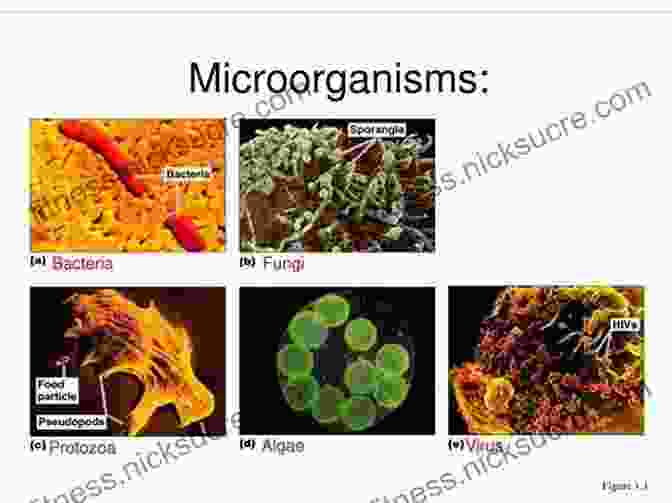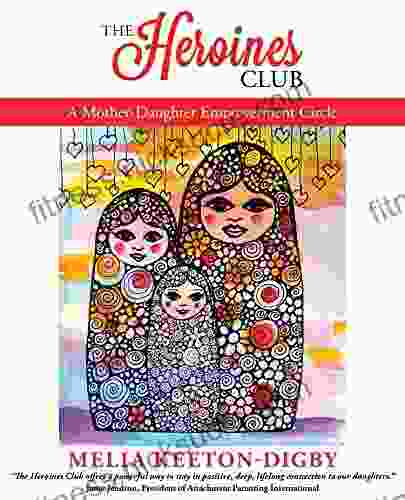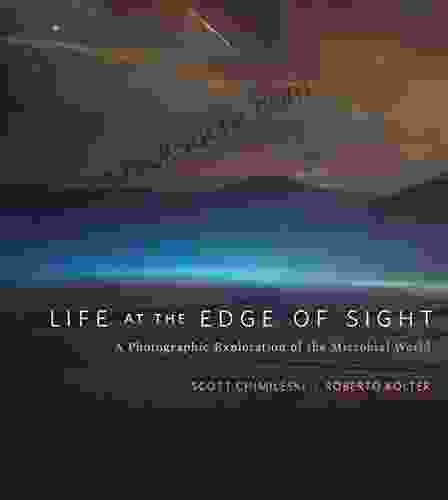Life at the Edge of Sight: Exploring the Hidden World of Microorganisms

4.6 out of 5
| Language | : | English |
| File size | : | 441926 KB |
| Text-to-Speech | : | Enabled |
| Screen Reader | : | Supported |
| Enhanced typesetting | : | Enabled |
| Print length | : | 371 pages |

Microorganisms are microscopic organisms that are found in every environment on Earth, from the deepest oceans to the highest mountains. They are essential for the functioning of our planet, playing a vital role in nutrient cycling, decomposition, and the production of oxygen. Microorganisms also have a profound impact on human health, causing diseases such as pneumonia and tuberculosis, but also providing us with antibiotics and other life-saving drugs.
Despite their importance, microorganisms are often overlooked and underappreciated. This is because they are too small to be seen with the naked eye, and because their effects are often indirect and subtle. However, by using microscopes and other scientific tools, we are now beginning to understand the incredible diversity and importance of microorganisms.
In this article, we will explore the hidden world of microorganisms and their impact on our planet. We will discuss the different types of microorganisms, their role in the environment, and their potential benefits and risks to human health. We will also explore some of the latest research on microorganisms, and how this research is helping us to understand their role in our world.
The Diversity of Microorganisms
Microorganisms are a vast and diverse group of organisms. They include bacteria, fungi, algae, protozoa, and viruses. Bacteria are the most common type of microorganism, and they are found in all environments on Earth. Fungi are also widespread, and they play an important role in the decomposition of organic matter. Algae are photosynthetic organisms that are found in aquatic environments. Protozoa are single-celled animals that are found in both aquatic and terrestrial environments. Viruses are not cells, but they are considered to be microorganisms because they can only replicate inside the cells of other organisms.
The diversity of microorganisms is staggering. There are estimated to be trillions of different species of microorganisms on Earth, and only a small fraction of these have been identified and studied. This diversity is due to the fact that microorganisms have evolved to live in a wide range of habitats, from the extreme heat of hydrothermal vents to the cold darkness of the deep sea.
The Role of Microorganisms in the Environment
Microorganisms play a vital role in the functioning of our planet. They are responsible for the cycling of nutrients, the decomposition of organic matter, and the production of oxygen. Microorganisms also help to control the populations of other organisms, including plants and animals.
The cycling of nutrients is essential for the health of our planet. Microorganisms break down organic matter, releasing nutrients such as nitrogen and phosphorus back into the environment. These nutrients are then taken up by plants and animals, which use them to build new cells and tissues.
The decomposition of organic matter is another important role played by microorganisms. Microorganisms break down dead plants and animals, releasing carbon dioxide and other gases back into the atmosphere. This process helps to recycle carbon and other nutrients back into the environment.
Microorganisms also play a role in the production of oxygen. Photosynthetic microorganisms, such as algae, use sunlight to convert carbon dioxide and water into oxygen. This oxygen is essential for the survival of all aerobic organisms, including humans.
In addition to their roles in nutrient cycling, decomposition, and oxygen production, microorganisms also help to control the populations of other organisms. For example, some microorganisms produce toxins that can kill bacteria and other microorganisms. Other microorganisms help to control the populations of plants and animals by parasitizing them or eating them.
The Impact of Microorganisms on Human Health
Microorganisms have a profound impact on human health. They can cause diseases such as pneumonia, tuberculosis, and meningitis. However, microorganisms also provide us with antibiotics and other life-saving drugs.
Microorganisms can cause disease by producing toxins, damaging cells, or triggering an immune response. Some of the most common diseases caused by microorganisms include:
* Pneumonia: Pneumonia is an infection of the lungs that is caused by bacteria, viruses, or fungi. * Tuberculosis: Tuberculosis is a bacterial infection of the lungs that can spread to other parts of the body. * Meningitis: Meningitis is an infection of the membranes that line the brain and spinal cord. It can be caused by bacteria, viruses, or fungi.
Microorganisms also provide us with antibiotics and other life-saving drugs. Antibiotics are drugs that kill or inhibit the growth of bacteria. They are used to treat a wide range of bacterial infections, including pneumonia, tuberculosis, and meningitis. Other drugs derived from microorganisms include antifungals, which are used to treat fungal infections, and antivirals, which are used to treat viral infections.
The Future of Microbiology
Microbiology is a rapidly growing field of science. Researchers are using new technologies to study microorganisms in unprecedented detail, and this research is leading to a greater understanding of their role in our world.
One of the most exciting areas of research in microbiology is the study of extremophiles. Extremophiles are microorganisms that live in extreme environments, such as hot springs, deep sea hydrothermal vents, and acid lakes. These microorganisms have evolved to survive in conditions that would kill most other organisms, and they are providing scientists with new insights into the limits of life on Earth.
Another area of research in microbiology is the study of the human microbiome. The human microbiome is the community of microorganisms that live on and in our bodies. These microorganisms play a vital role in our health, and they are being studied to understand their role in diseases such as obesity, diabetes, and cancer.
Microbiology is a fascinating and important field of science. By studying microorganisms, we are learning more about the world around us and our place in it. This research is leading to new discoveries that have the potential to improve our health and our planet.
Microorganisms are essential for the functioning of our planet and have a profound impact on human health. By studying microorganisms, we are learning more about the world around us and our place in it. This research is leading to new discoveries that have the potential to improve our health and our planet.
4.6 out of 5
| Language | : | English |
| File size | : | 441926 KB |
| Text-to-Speech | : | Enabled |
| Screen Reader | : | Supported |
| Enhanced typesetting | : | Enabled |
| Print length | : | 371 pages |
Do you want to contribute by writing guest posts on this blog?
Please contact us and send us a resume of previous articles that you have written.
 Fiction
Fiction Non Fiction
Non Fiction Romance
Romance Mystery
Mystery Thriller
Thriller SciFi
SciFi Fantasy
Fantasy Horror
Horror Biography
Biography Selfhelp
Selfhelp Business
Business History
History Classics
Classics Poetry
Poetry Childrens
Childrens Young Adult
Young Adult Educational
Educational Cooking
Cooking Travel
Travel Lifestyle
Lifestyle Spirituality
Spirituality Health
Health Fitness
Fitness Technology
Technology Science
Science Arts
Arts Crafts
Crafts DIY
DIY Gardening
Gardening Petcare
Petcare Shaun David Hutchinson
Shaun David Hutchinson Paul Green
Paul Green Alice Boyes Ph D
Alice Boyes Ph D Alexis L Boylan
Alexis L Boylan Carl Erskine
Carl Erskine William G Tapply
William G Tapply Erez Morabia
Erez Morabia Daniel Goleman
Daniel Goleman Luke Reynolds
Luke Reynolds Elizabeth Clare Prophet
Elizabeth Clare Prophet Sir E A Wallis Budge
Sir E A Wallis Budge Doc Norton
Doc Norton Zac Unger
Zac Unger Karyl Rickard
Karyl Rickard Mark C Purcell
Mark C Purcell Jason Selk
Jason Selk Alicia Puglionesi
Alicia Puglionesi Hape Kerkeling
Hape Kerkeling Alexandra Robbins
Alexandra Robbins David R Hawkins
David R Hawkins Udo Schaefer
Udo Schaefer Said Hasyim
Said Hasyim Amy Pickar Abernethy
Amy Pickar Abernethy Ben Applebaum
Ben Applebaum Jonathan Carroll
Jonathan Carroll Mark Rippetoe
Mark Rippetoe Mary Cholmondeley
Mary Cholmondeley Constantine A Balanis
Constantine A Balanis Susan Jules
Susan Jules Eric Mantle
Eric Mantle Mike Westin
Mike Westin Matthew Bowling
Matthew Bowling Brian D Ambrosio
Brian D Ambrosio Wendy Wood
Wendy Wood Gen Tanabe
Gen Tanabe Steve O Hearn
Steve O Hearn Roy Barth
Roy Barth Philip Rossoni
Philip Rossoni Sarah Rayner
Sarah Rayner Alfred Tarski
Alfred Tarski Michael Mcteigue
Michael Mcteigue Kathryn A Bard
Kathryn A Bard Les Adams
Les Adams Jessica Riskin
Jessica Riskin Eric Barker
Eric Barker Peter J Hotez
Peter J Hotez Dylan Farrow
Dylan Farrow Grackle Pigeon
Grackle Pigeon John Pagano
John Pagano Lyanda Lynn Haupt
Lyanda Lynn Haupt Adrian Dingle
Adrian Dingle Shaka Senghor
Shaka Senghor Carmindy
Carmindy Alexandra Mayzler
Alexandra Mayzler Alexey Zimarev
Alexey Zimarev John Abramson
John Abramson Lara Carter
Lara Carter Michelle Rotteau
Michelle Rotteau Karin Slaughter
Karin Slaughter Michael Patrick Ghiglieri
Michael Patrick Ghiglieri Daniel Foor Phd
Daniel Foor Phd Beccy Hands
Beccy Hands Lance Akiyama
Lance Akiyama Tom Mackie
Tom Mackie Penelope Freed
Penelope Freed Ali Almossawi
Ali Almossawi Heidi Murkoff
Heidi Murkoff Peter Woit
Peter Woit Alina Adams
Alina Adams Bernie Clark
Bernie Clark Charles Hainsworth
Charles Hainsworth Robert A Monroe
Robert A Monroe Stephen Blyth
Stephen Blyth David J Rothman
David J Rothman Minda Harts
Minda Harts Jessica Long
Jessica Long Thomas Hill
Thomas Hill Arthur Robert Harding
Arthur Robert Harding Hans Rosling
Hans Rosling Alice Cooper
Alice Cooper Carmen Martinez Jover
Carmen Martinez Jover Thomas Horn
Thomas Horn Gordon England
Gordon England Eric Siegel
Eric Siegel Mike Wallace
Mike Wallace Lauren Drain
Lauren Drain Hank D Haney
Hank D Haney Sacha Black
Sacha Black Dr Heather L Johnson
Dr Heather L Johnson Jayson Georges
Jayson Georges Kathy Gunst
Kathy Gunst Jim Walden
Jim Walden Robert P Crease
Robert P Crease Michael Thorp
Michael Thorp Stephen Ilg
Stephen Ilg Tim Weston
Tim Weston Frank C Hawkins
Frank C Hawkins Peggy Vincent
Peggy Vincent David G Kingdon
David G Kingdon Stephanie Mitchell Cnm Msn Dnp
Stephanie Mitchell Cnm Msn Dnp Alexis C Bunten
Alexis C Bunten Michael Clark
Michael Clark Paige Wolf
Paige Wolf Nancy Carpentier Brown
Nancy Carpentier Brown Roland Huntford
Roland Huntford Ellen Kane
Ellen Kane Peter Flom
Peter Flom Patrick Torsell
Patrick Torsell G Pascal Zachary
G Pascal Zachary Tasha Alexander
Tasha Alexander Alexis Averbuck
Alexis Averbuck Complete Test Preparation Inc
Complete Test Preparation Inc Dustin Vaughn Warncke
Dustin Vaughn Warncke Laura Gauld
Laura Gauld Mike Dauplaise
Mike Dauplaise Jeremy Benson
Jeremy Benson Michaelbrent Collings
Michaelbrent Collings Karen Mcquestion
Karen Mcquestion Jerry Lynch
Jerry Lynch Elan Golomb
Elan Golomb Patti M Hummel
Patti M Hummel Scott Chimileski
Scott Chimileski Tim R Swartz
Tim R Swartz Glade B Curtis
Glade B Curtis William King
William King Peter Gandy
Peter Gandy K T Hanna
K T Hanna Jenna Ortega
Jenna Ortega Alexandra Kennon
Alexandra Kennon Jill Simonian
Jill Simonian Erika Rogers Holland
Erika Rogers Holland Malala Yousafzai
Malala Yousafzai Randy Spencer
Randy Spencer Suzanne Giesemann
Suzanne Giesemann Deborah Layton
Deborah Layton Jeremy Hance
Jeremy Hance Joshua R Eyler
Joshua R Eyler Kirstin Cronn Mills
Kirstin Cronn Mills Judith Levin
Judith Levin Josh Peter
Josh Peter Bayo Akomolafe
Bayo Akomolafe Lisa Manterfield
Lisa Manterfield Alfred Begum
Alfred Begum Romina Garber
Romina Garber Sir Oliver Lodge
Sir Oliver Lodge Robert Kagan
Robert Kagan Michele Filgate
Michele Filgate Donna Bozzo
Donna Bozzo Charlie N Holmberg
Charlie N Holmberg Avi Gordon
Avi Gordon Anymom
Anymom Hollie Henderson
Hollie Henderson Joeanna Rebello Fernandes
Joeanna Rebello Fernandes Sarah Melland
Sarah Melland Anthony Legins
Anthony Legins Joe Dolio
Joe Dolio Mark Zondo
Mark Zondo Alfie Kohn
Alfie Kohn Heinrich Cornelius Agrippa Von Nettesheim
Heinrich Cornelius Agrippa Von Nettesheim Sue Tidwell
Sue Tidwell John Lohn
John Lohn George S Fichter
George S Fichter Devyn Stone
Devyn Stone Adah Bakalinsky
Adah Bakalinsky Alfred Edersheim
Alfred Edersheim Ron Ritchhart
Ron Ritchhart Corky Pollan
Corky Pollan Whitney Ferre
Whitney Ferre Rev Cain
Rev Cain Matilda Betham
Matilda Betham Ally Nathaniel
Ally Nathaniel Ruby Vincent
Ruby Vincent Ali Novak
Ali Novak Scott Weems
Scott Weems Dan Jenkins
Dan Jenkins Alicia Ranoldo
Alicia Ranoldo John Pirillo
John Pirillo Pantea Kalhor
Pantea Kalhor Alice Scordato
Alice Scordato America S Test Kitchen
America S Test Kitchen Kynan Bridges
Kynan Bridges Rob Price
Rob Price Alexandria Moran
Alexandria Moran Bjorn Kjellstrom
Bjorn Kjellstrom John Bemelmans Marciano
John Bemelmans Marciano Tracy Becker
Tracy Becker George Takei
George Takei Mark Elbroch
Mark Elbroch Eileen Edna Power
Eileen Edna Power Thomas F King
Thomas F King Natalie Angier
Natalie Angier Lynne Cox
Lynne Cox Lara Alcock
Lara Alcock Frank J Tipler
Frank J Tipler Malina Malkani Ms Rdn Cdn
Malina Malkani Ms Rdn Cdn Patrick Ness
Patrick Ness Jermaine Harris
Jermaine Harris Gary A Klein
Gary A Klein Emma Lock
Emma Lock Sabina Khan
Sabina Khan Nancy Roe Pimm
Nancy Roe Pimm Joy S Kasson
Joy S Kasson Roddy Scheer
Roddy Scheer Frank Amthor
Frank Amthor Damon Centola
Damon Centola Richard Moore
Richard Moore Tim Maudlin
Tim Maudlin Karin Perry
Karin Perry Nel Noddings
Nel Noddings Martha Shirk
Martha Shirk Bassem R Mahafza
Bassem R Mahafza Kevin Allen
Kevin Allen Joe Proulx
Joe Proulx David A Ebert
David A Ebert Executivegrowth Summaries
Executivegrowth Summaries Robin G Jordan
Robin G Jordan Alexei Yurchak
Alexei Yurchak Arno Ilgner
Arno Ilgner Suzy Amis Cameron
Suzy Amis Cameron Reina Donovan
Reina Donovan Judy Murray
Judy Murray Raymond Barrett
Raymond Barrett Alexey Osadchuk
Alexey Osadchuk Wade Davis
Wade Davis Pottermore Publishing
Pottermore Publishing Richard H Coop
Richard H Coop Amanda Ripley
Amanda Ripley Kathy Barker
Kathy Barker Michael Vassallo
Michael Vassallo David Travis
David Travis Michael J Behe
Michael J Behe Alice Roberts
Alice Roberts Alice Kuipers
Alice Kuipers Gabriel Aluisy
Gabriel Aluisy Jose Albani
Jose Albani Mario Cleves
Mario Cleves Robert Zimmerman
Robert Zimmerman Alice Nobile
Alice Nobile Alexandra Bracken
Alexandra Bracken Thomas Hund
Thomas Hund Henry Gilbert
Henry Gilbert Stuart Kauffman
Stuart Kauffman Sarah Bolitho
Sarah Bolitho Lydia Wylie Kellermann
Lydia Wylie Kellermann Yehuda Lindell
Yehuda Lindell Courtney Kenney
Courtney Kenney Matthew Cowsert
Matthew Cowsert Shannon Messenger
Shannon Messenger Alexia Leachman
Alexia Leachman Ian Morris
Ian Morris Crystal Waltman
Crystal Waltman Brent Warner
Brent Warner Jim Vance
Jim Vance Kev Reynolds
Kev Reynolds Martha Sears
Martha Sears Zar Petkov
Zar Petkov Helen Purperhart
Helen Purperhart Kathleen Mcauliffe
Kathleen Mcauliffe Christopher Mitchell
Christopher Mitchell Joshua Coleman Phd
Joshua Coleman Phd Heather Lang
Heather Lang Matthew Dektas
Matthew Dektas Paul H Frampton
Paul H Frampton Robert Scott
Robert Scott Patricia A Mckillip
Patricia A Mckillip Rin Chupeco
Rin Chupeco Alice Walker
Alice Walker Michael R Lindeburg
Michael R Lindeburg Lonely Planet
Lonely Planet Neil J Salkind
Neil J Salkind Normandi Ellis
Normandi Ellis Peter Stark
Peter Stark David A Askay
David A Askay Mike Commito
Mike Commito Anna Mathur
Anna Mathur Mary Beth Knight
Mary Beth Knight Aram Attarian
Aram Attarian Whitney Miller
Whitney Miller M Mitchell Waldrop
M Mitchell Waldrop Kimberly V Garner
Kimberly V Garner Sigurd F Olson
Sigurd F Olson Howard Pyle
Howard Pyle Krissy Moehl
Krissy Moehl Steve Parker
Steve Parker Li Ming Lee
Li Ming Lee Eric Kaplan
Eric Kaplan Frank White
Frank White Leslie Anthony
Leslie Anthony Nick Littlehales
Nick Littlehales Mitchell P Jones
Mitchell P Jones David J Goldman
David J Goldman Lola Glass
Lola Glass Jonathan Weiner
Jonathan Weiner Alice Beck Kehoe
Alice Beck Kehoe Keisuke Andrew
Keisuke Andrew Susan Albers
Susan Albers Jane Gildart
Jane Gildart Dawn Brookes
Dawn Brookes Peter Collier
Peter Collier Mark Sisson
Mark Sisson Ali Katz
Ali Katz Susan Wise Bauer
Susan Wise Bauer Stacy Tornio
Stacy Tornio Paul Asay
Paul Asay Alice Jolly
Alice Jolly Theodore Roosevelt
Theodore Roosevelt Ernie Palladino
Ernie Palladino Penny Warner
Penny Warner Neil Schulenburg
Neil Schulenburg Sharon Powell
Sharon Powell Mikel Jollett
Mikel Jollett Matthew Silverman
Matthew Silverman Eleanor Drago Severson
Eleanor Drago Severson Frederick Courteney Selous
Frederick Courteney Selous Douglas Starr
Douglas Starr Arthur Lydiard
Arthur Lydiard Michael Cave
Michael Cave Jodi L Weinstein
Jodi L Weinstein Sam Thoma
Sam Thoma Alice Miller
Alice Miller Arthur Ashe
Arthur Ashe Anders Morley
Anders Morley David Byrne
David Byrne Allison Saft
Allison Saft Robin Kaplan M Ed Ibclc
Robin Kaplan M Ed Ibclc Jay Golden
Jay Golden Emily Levesque
Emily Levesque Nic Sheff
Nic Sheff Jon Moxley
Jon Moxley Richard Preston
Richard Preston Stacey L Bradford
Stacey L Bradford Wayne Stewart
Wayne Stewart Paul Stephenson
Paul Stephenson John G West
John G West Alexandra Brodsky
Alexandra Brodsky Melia Keeton Digby
Melia Keeton Digby Terry Marsh
Terry Marsh Margaret Starbird
Margaret Starbird Vicki Manning
Vicki Manning Melissa Falkowski
Melissa Falkowski Jim Mclean
Jim Mclean Oivind Andersson
Oivind Andersson Alice Horton
Alice Horton Jean Chatzky
Jean Chatzky Helen Hodgson
Helen Hodgson Mark Kaplan
Mark Kaplan David Gessner
David Gessner Bob Toski
Bob Toski Leslie Berlin
Leslie Berlin Norman L Keltner
Norman L Keltner David G Alciatore
David G Alciatore Carol Chaitkin
Carol Chaitkin Crysta Mchenry
Crysta Mchenry Sarah A Chrisman
Sarah A Chrisman C S Johnson
C S Johnson Jack Batten
Jack Batten Alexia Purdy
Alexia Purdy Ryuu Shinohara
Ryuu Shinohara Carlton Kirby
Carlton Kirby Steven Pressfield
Steven Pressfield Sammy Hagar
Sammy Hagar Vishal Sambharya
Vishal Sambharya Aris Spanos
Aris Spanos Lawrence Weschler
Lawrence Weschler Jonny Bowden
Jonny Bowden Jessica Goodman
Jessica Goodman Robert Lusetich
Robert Lusetich Eric Layton
Eric Layton Wendy Currie
Wendy Currie Dagny Scott Barrios
Dagny Scott Barrios Erica Lyon
Erica Lyon Katie Walsh Flanagan
Katie Walsh Flanagan Ken Mink
Ken Mink Diana Hudson
Diana Hudson Scott Linden
Scott Linden Chase Kosterlitz
Chase Kosterlitz Alfred Lambremont Webre
Alfred Lambremont Webre John C Hudson
John C Hudson Pam Withers
Pam Withers Emily Riehl
Emily Riehl Michael Vlessides
Michael Vlessides Duncan Hines
Duncan Hines Ali Velez Alderfer
Ali Velez Alderfer Craig S Brantley
Craig S Brantley Alfred Tennyson
Alfred Tennyson Andrew Yueh
Andrew Yueh Rachel Vitale
Rachel Vitale Louis Borgenicht
Louis Borgenicht Charles Murray
Charles Murray Ashley Mardell
Ashley Mardell Alexandra Fuller
Alexandra Fuller Darrin Gee
Darrin Gee Carol Ekarius
Carol Ekarius Joel Weinberger
Joel Weinberger Rosary O Neill
Rosary O Neill Stephen Altschuler
Stephen Altschuler Deborah Laird Meeks
Deborah Laird Meeks Karin Bojs
Karin Bojs Philip Freeman
Philip Freeman Bear Grylls
Bear Grylls Virgil Herring
Virgil Herring Ted Zeff
Ted Zeff Carolyn Highland
Carolyn Highland Alfred North Whitehead
Alfred North Whitehead Hicham And Mohamed Ibnalkadi
Hicham And Mohamed Ibnalkadi Peter D Rogers
Peter D Rogers Phillip Starr
Phillip Starr Daniel M Davis
Daniel M Davis Thao Doan
Thao Doan Mary Johnson
Mary Johnson Becca Maberly
Becca Maberly Alexandra Heminsley
Alexandra Heminsley Michael Johnson
Michael Johnson Alice Gorman
Alice Gorman Penny Armstrong
Penny Armstrong Jen Noonan
Jen Noonan Alice Sebold
Alice Sebold Alice June
Alice June Jay Greenberg
Jay Greenberg Clay Bonnyman Evans
Clay Bonnyman Evans David Watson
David Watson Alexis Marie Chute
Alexis Marie Chute Laura Katz
Laura Katz Lauren Harris
Lauren Harris German Raigosa
German Raigosa Kenn Bivins
Kenn Bivins Nick Kalyn
Nick Kalyn Dianna L Van Blerkom
Dianna L Van Blerkom Daniel Young
Daniel Young David Wolman
David Wolman Andrew Zimmern
Andrew Zimmern Jeff Sambur
Jeff Sambur Brigid Moss
Brigid Moss John F Gilbey
John F Gilbey Ali Wong
Ali Wong Dan Aadland
Dan Aadland Lindsay Grace
Lindsay Grace Paul Wilmott
Paul Wilmott Ryan Guldberg
Ryan Guldberg Lynne Robinson
Lynne Robinson Guy Hunter Watts
Guy Hunter Watts Dr C
Dr C Karen Kovacs
Karen Kovacs Seabury Blair
Seabury Blair Rebecca Schwarzlose
Rebecca Schwarzlose Mark Harris
Mark Harris Mary Kay Andrews
Mary Kay Andrews Alice Steinbach
Alice Steinbach Rails To Trails Conservancy
Rails To Trails Conservancy Heather Baker
Heather Baker George Beinhorn
George Beinhorn Joseph Henrich
Joseph Henrich Valora Conciencia En Los Medios
Valora Conciencia En Los Medios David Armitage
David Armitage Tracy Anderson
Tracy Anderson Penelope Leach
Penelope Leach Jeff Cooper
Jeff Cooper Milly Buonanno
Milly Buonanno Christopher Steiner
Christopher Steiner Samantha Cattach
Samantha Cattach Yvette Marquez Sharpnack
Yvette Marquez Sharpnack Alice Borchardt
Alice Borchardt Karl Wiegers
Karl Wiegers John Madieu
John Madieu Dean Pohlman
Dean Pohlman Alexandra M Levitt
Alexandra M Levitt Chip K
Chip K Sarah K L Wilson
Sarah K L Wilson Andy Kirkpatrick
Andy Kirkpatrick Nick Mitchell
Nick Mitchell Larry Baush
Larry Baush David Maidment
David Maidment Nora Roberts
Nora Roberts Gary Wayne
Gary Wayne Veronica O Keane
Veronica O Keane Robert L Kelly
Robert L Kelly
Light bulbAdvertise smarter! Our strategic ad space ensures maximum exposure. Reserve your spot today!
 Austin FordFollow ·8k
Austin FordFollow ·8k Dwight BlairFollow ·13.9k
Dwight BlairFollow ·13.9k Emmett MitchellFollow ·18.7k
Emmett MitchellFollow ·18.7k Yasunari KawabataFollow ·11.2k
Yasunari KawabataFollow ·11.2k Jayson PowellFollow ·14.9k
Jayson PowellFollow ·14.9k Miguel NelsonFollow ·7.2k
Miguel NelsonFollow ·7.2k Willie BlairFollow ·16.4k
Willie BlairFollow ·16.4k Joseph FosterFollow ·14.8k
Joseph FosterFollow ·14.8k

 Derek Bell
Derek BellReflections For Your Heart and Soul: A Journey of...
In the depths of...

 Joseph Conrad
Joseph ConradThe Heroines Club: Empowering Mothers and Daughters
The Heroines Club...

 Milan Kundera
Milan KunderaThe First Kormak Omnibus: A Literary Expedition into the...
Prepare to embark on an extraordinary literary...

 W.H. Auden
W.H. AudenThe Color Purple: A Journey of Love, Resilience, and...
The Color Purple, a groundbreaking novel...

 Harvey Hughes
Harvey HughesTemporal Anomalies and Replacement Theory: Unraveling the...
: The Enigma of Time Time,...
4.6 out of 5
| Language | : | English |
| File size | : | 441926 KB |
| Text-to-Speech | : | Enabled |
| Screen Reader | : | Supported |
| Enhanced typesetting | : | Enabled |
| Print length | : | 371 pages |














